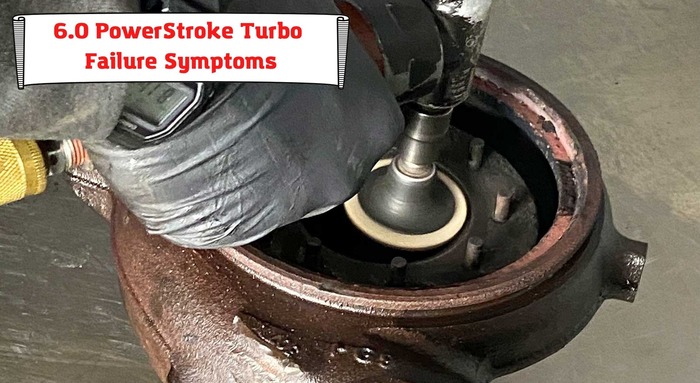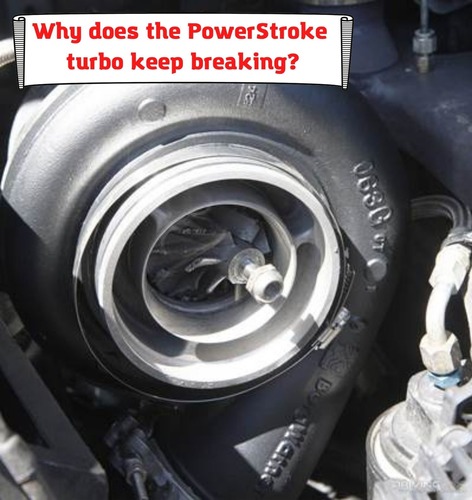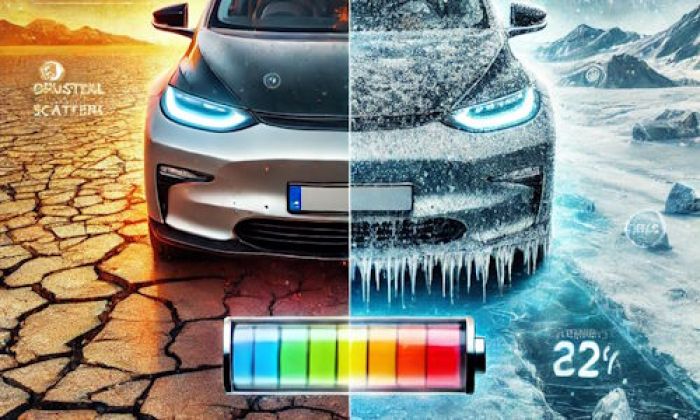
PowerStroke diesel engines are thought to be quite reliable. But not all of them are really good. The 7.3 PowerStroke was really good and long-lasting. But then Ford introduced the 6.0 PowerStroke engine in 2003 replacing the older 7.3-liter unit in most cars and trucks. Buyers thought that the reliability will be even better but not worse of course.
But in fact, these engines weren’t as good as the previous model. They had a lot of problems, recall campaigns, and also technical issues reported by the owners. Today we’ll concentrate on turbocharger failures and issues that may tell you about the upcoming death of some engine parts.
Here are some things we’ll speak about:
- what are the main problems of the engine;
- how can you say that a turbocharger is going to break;
- are there any good things in 6.0 PowerStroke;
- what’s the mileage of the main parts of the engine;
- what are the repair costs of a broken 6.0 PowerStroke turbo.
Let’s get started!
Where did they use the 6.0 PowerStroke?
This engine was introduced at the beginning of the 2000s to replace the older 7.4-liter diesel engine in Ford heavy-duty trucks, Ford Econoline van, and also in Ford Expedition SUV. Of course, the heavy-duty diesel engine was mainly used in pickup trucks that were sold to companies for commercial service.
And we can’t say that this is the worst engine ever made by Ford. But it’s obviously not the best one.
Here are some troubles people have reported much on these engines:
- Head gasket. The failure of the head gasket is probably the most common thing happening with 6.0 PowerStroke. Actually, the problem comes down to head studs that fail because of excessive pressure in the engine.
- Fuel control failure. As in nearly all diesel engines, you will find fuel injection problems in 6.0 PowerStroke. Actually, it’s all about the module that controls the injection. But the injectors themselves can fail, too.
- Oil and EGR coolers. This is a traditional problem of older Ford engines. EGR cooler and oil cooler get clogged and fail making the oil 20-30% hotter. This reduces the lifespan of oil and destroys the engine gradually.
- EGR valve. The valve may fail because of poor cooling. If it fails, the engine may go to a limp mode or it may start working with multiple problems.
- Turbo failure. The turbocharger is thought to be quite efficient here, but it’s not the most reliable turbocharging system in the world. Multiple issues have been reported, and today we’ll talk mainly about them.
The cylinder block is very reliable. The cylinder head can also work hard and be OK for hundreds of thousands of miles. But some other equipment tends to break all the time and cause minor problems constantly.
Let’s dive into turbo problems of the 6.0 PowerStroke diesel engine.
How can you say your PowerStroke has turbo issues?
First of all, you should know that problems with your turbocharger don’t start immediately and suddenly. They will develop over time and you will have some time to react. Of course, not all drivers pay much attention to slight changes in how their truck works. But you should be more careful with this.
The sooner you find out about the upcoming problems, the cheaper it is to repair them.
Here are some specific signs that your 6.0 PowerStroke turbocharger is failing:
- Distinct power loss. You will notice that the car is not capable of towing much and it accelerates much slower than it should.
- Whining noise coming from your engine. The whining noise comes from the turbocharger with a broken part.
- Black smoke from the exhaust. The engine will get much less air and the diesel fuel won’t be burned ultimately. Some fuel will get to the exhaust system and will burn there causing some black smoke.
- Check engine light on the dashboard. The check engine light will come on because the sensors of the engine will register problems with burning the fuel.
Of course, some other things may occur – you should take seriously any changes in the way your vehicle works. But these four factors are most likely to occur. Just keep an eye on them and make everything to prevent a final failure of the turbocharger or even of the engine.
Why does the PowerStroke turbo keep breaking?

Well, this turbocharger may easily go a lot of miles. The average lifespan of the unit is around 200,000 miles. But of course, it may be both more durable and less reliable depending on different factors.
Sometimes these factors depend on a person who drives the vehicle, but sometimes they don’t. It’s not completely correct to say that Ford has made a bad turbocharger because it usually works well and doesn’t cause many problems.
Here’s why it can be broken:
- the hot oil can kill your turbocharger much sooner than you may think – this adds to the problem of oil cooler;
- also, the wrong oil type will most likely kill the turbo very fast, especially if you use the high viscosity oil;
- any mechanical damage will kill the PowerStroke turbocharger very fast because its parts are quite vulnerable;
- natural wear is also the reason to consider, especially if you have a vehicle with more than 200,000 miles on the clock;
- the bad air filter is another reason why your turbocharger may commit suicide by taking in dirty air when working.
The turbocharger has two pairs of impellers that move air. These impellers should sit very tough on their places and get oiled properly. Also, they don’t want to get any debris from the incoming air. Once something bad happens, the turbocharger starts whining and works with some problems.
If you don’t do anything with that, the turbocharger will completely die.
Can you drive your 6.0 PowerStroke without a turbocharger?
Well, it’s possible but not recommended. First, you will have a high chance of damaging your engine. Especially in those cases when you tow something with your truck or SUV. Also, you will need to rotate the engine much to make it move your heavy vehicle. This is not good for a diesel engine and it may be damaged (pistons, piston rings, valves, and valve seals may die sooner).
But if you need to drive a mile or two until you reach a service station, you may do it. Drive on the right side of the road and don’t hurry up much. Your engine should deal with that task easily.
What are the ways to repair your turbocharger?
The repair cost and procedures depend much on what exactly happened to your turbo. Once it is not broken completely, you can repair the turbocharger and will not have to pay so much money for replacing it. But many drivers prefer replacing the turbo because in that case, they get a warranty, and also they are likely to drive their vehicles longer with no similar issues.
But here’s what you will need to understand:
- better find the reason why your turbo failed – it may have happened because of some other problems with your engine;
- be careful with aftermarket parts and ready-to-install turbos – they are not always a good solution for you;
- change the oil once you repair or replace the turbo because the oil may have been the main reason why the turbocharger failed;
- make sure the oil tubes are clean and working properly before you start your engine with a new turbocharger.
The cost of repair may be quite bad. So many owners will opt for an aftermarket turbocharger kit which you may buy for $400 to $600, on average. The original turbos may be sold only as remanufactured parts, the new turbochargers aren’t produced by Ford for the 6.0 PowerStroke engines.
Labor costs should be somewhere near $400. This is a time-consuming task, so not many companies will agree to make it cheaper.
If you choose to repair your old PowerStroke turbocharger, your expenses are hard to estimate. Sometimes the repair cost tends to be higher than the cost of buying an aftermarket turbo kit. But in the end, you may get better results if you choose to repair your stock turbocharger.
Final words
You should understand that turbocharger issues are not the worst things that may happen with your Ford PowerStroke engine. Diesel turbochargers aren’t that expensive and you can buy an aftermarket turbo kit to make your vehicle work again. But in most cases, you can prevent any big problems with your turbo just by following the steps and tips given in our article.
We are pretty sure that the 6.0 PowerStroke is not a bad engine, although it’s not the best diesel unit ever made by Ford. You will have a lot of issues after the mileage of the vehicle is over 200,000 miles. These engines can easily go up to 300-350 thousand miles, but you will have to invest some money in them to maintain their optimal condition.
About the authors
The CarAraC research team is composed of seasoned auto mechanics and automotive industry professionals, including individuals with advanced degrees and certifications in their field. Our team members boast prestigious credentials, reflecting their extensive knowledge and skills. These qualifications include: IMI: Institute of the Motor Industry, ASE-Certified Master Automobile Technicians; Coventry University, Graduate of MA in Automotive Journalism; Politecnico di Torino, Italy, MS Automotive Engineering; Ss. Cyril and Methodius University in Skopje, Mechanical University in Skopje; TOC Automotive College; DHA Suffa University, Department of Mechanical Engineering






Add comment